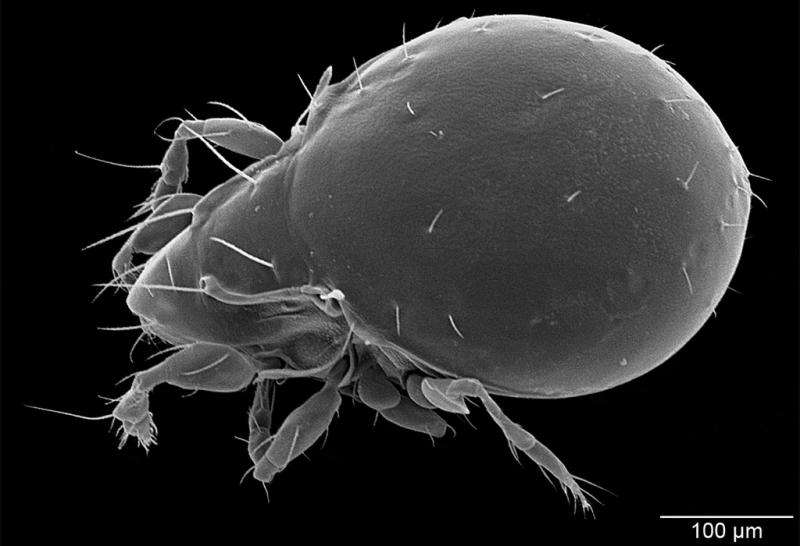Oribatid mite uses hydrogen cyanide for defence

The common oribatid mite species Oribatula tibialis is an extremely clever poisoner, as an interdisciplinary team of researchers under the leadership of the TU Darmstadt has shown and published in the Proceedings of the National Academy of Sciences. The mite uses hydrogen cyanide to defend itself against predators. This is something of a sensation, because this toxin is not generally present in the arsenal of the 80,000 known species of arachnids.
Hydrogen cyanide – with the chemical formula HCN – is one of the strongest known toxins. The liquid becomes gaseous at about 25°C and efficiently blocks the respiratory chain, so even tiny quantities will very quickly cause death by suffocation. During the Holocaust, the Nazis used hydrogen cyanide under the name of "Zyklon B" to murder millions of people in the gas chambers of concentration camps such as Auschwitz.
In nature, numerous plants produce the toxin for defence. For instance, the bitter almond: it contains amygdalin, which releases hydrogen cyanide if untreated almonds are consumed. Hydrogen cyanide is extremely rare among animals, since it requires a safe and stable form of storage in order to prevent accidental autointoxication. It has been thought that this problem had successfully been solved only by some insects and centipedes. Although the more than 80.000 species of arachnids are able to synthesise an impressively broad palette of chemical toxins, none were known that are able to synthesise and store hydrogen cyanide.
Now, though, an international interdisciplinary team of ecologists and chemists from the TU Darmstadt, the University of Graz and the State University of New York (Syracuse) has discovered a new natural product in an oribatid mite that stores and stabilizes hydrogen cyanide in the form of an ester.
Oribatula tibialis measures just half a millimetre, and lives in moss cushions, deadwood and the leaf litter of native forests. When attacked by predators such as predatory mites or centipedes, it releases mandelonitrile hexanoate from its defence glands. Hydrolysis commences as soon as this ester mixes with the attacker's saliva and rapidly leads to the release of hydrogen cyanide – thereby instantly putting an end to the tasty meal that had been anticipated. Thus, the tiny mite can defend itself efficiently without taking the risk of autointoxication.
This defence strategy was discovered by the scientists during systematic examinations of the defensive secretions of arachnids. They have now published the results with Dr. Michael Heethoff, Faculty of Biology at the TU Darmstadt as the corresponding author, in the Proceedings of the National Academy of Sciences (PNAS).
More information: Adrian Brückner et al. Storage and release of hydrogen cyanide in a chelicerate (), Proceedings of the National Academy of Sciences (2017). DOI: 10.1073/pnas.1618327114
Journal information: Proceedings of the National Academy of Sciences
Provided by Technische Universitat Darmstadt



















